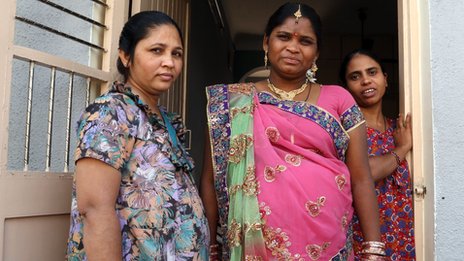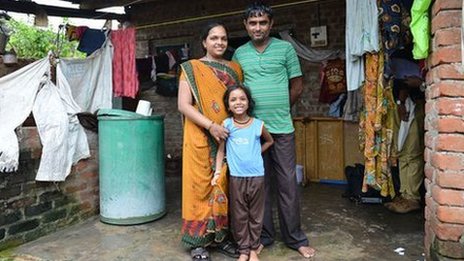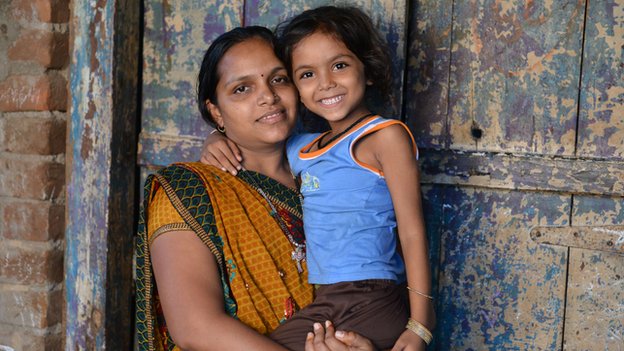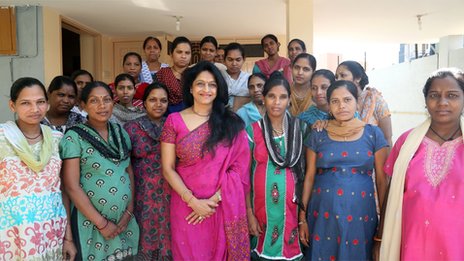I was out to lunch yesterday and saw a good looking young couple come into the restaurant, with their two beautiful children – a toddler about three and an infant about two months old. Nothing remarkable there I guess, except that the couple was gay and the children obviously became part of their family either through adoption, or via surrogacy and adoption, or through some other ‘non-traditional’ means. Seeing they don’t have a uterus between them, it’s a fairly safe assumption. Encountering them caused me mixed emotions… I was glad on the one hand that this loving couple could have a family and on the other hand, it made me feel so sad all over again because I’ve never managed to have the family that I wanted.
Surrogacy has been something that has been on my mind since oh, about 2006 when I had my last egg collection and have been agonising what to do with my ten little frozen embryos ever since. There were three major hindrances to attempting to extend our little family through surrogacy though…. 1) it was illegal in Queensland, 2) we were considered ineligible in other states due to the fact that I already had one viable live birth and was deemed by some doctors as still potentially able to have another viable live birth (and this in spite of four miscarriages and several years trying), and 3) it would have been hideously expensive even if we were eligible.
Then things sort of changed. Queensland was slowly getting in step with the rest of the world and legalized altruistic surrogacy via the Surrogacy Act in 2010, and by that time I had been involved in another car accident rendering my incapable of carrying another pregnancy, which would mean we were eligible now. However there still remained at least two fairly hefty obstacles.. 1) finding a suitable surrogate we could trust – how do you even begin to ask someone to do something so monumentally huge for you? and 2) the nearly $30,000 in medical and legal expenses we were told it would cost to go through a surrogacy procedure. 🙁 The stars were never destined to align on this one, I fear. And yet, I still have those ten little embryos in the freezer, and I would give my right hand to see even one of them grow into a little person.
Recently I saw an article on the BBC news website about commercial surrogacy in India, and it has raised the whole surrogacy thing back up again.
___________________________________________________________
Living inside the house of surrogates – Lucy Wallis BBC News
Commercial surrogacy is estimated to be worth more than $1bn a year in India. While pregnant, some surrogate mothers live in dormitories – which critics call baby factories. They give childless couples the family they have longed for, but what is it like for the women who carry someone else’s child for money?
“In India families are close. You are ready to do anything for your children,” says 28-year-old Vasanti. “To see my children get everything I ever dreamt of, that’s why I have become a surrogate.” Vasanti is pregnant, but not with her own child – she is carrying a Japanese couple’s baby. For this she will be paid $8,000 (£4,967), enough to build a new house and send her own two children, aged five and seven, to an English-speaking school – something she never thought was possible. “I’m happy from the bottom of my heart,” says Vasanti. She was implanted with their embryo in the small city of Anand in Gujarat and will spend the next nine months living in a nearby dormitory with about 100 other surrogate mothers, all patients of Dr Nayna Patel.
There are up to 10 surrogate mothers in each room. The women have their meals and vitamins delivered to them and are encouraged to rest. Vasanti, however, cannot help feeling restless. “At night I wander around because I can’t sleep. As my tummy is getting bigger and the baby is growing I am getting really bored,” says Vasanti. “Now I want to go home really soon to be with my children and my husband.” The rules of the house forbid the women from having sex during the pregnancy, and emphasise that neither the doctor nor the hospital, nor the couple whose baby it is, are responsible for any complications. If the mother is bearing twins she receives a higher fee – $10,000. If she miscarries within three months, she receives $600. The couples are charged around $28,000 for a pregnancy that leads to a successful birth.
Dr Nayna Patel (front centre) has delivered hundreds of babies in the last decade
Dr Patel, who runs the IVF clinic and the dormitory and delivers the babies, acknowledges that many people find her work offensive. “I have faced criticism. I am facing it and I will be facing it, because this, according to many, is a controversial subject,” she says. “There are a lot of allegations that this is just a business, this is just baby-selling, a baby-making factory, and all these phrases used to hurt.” Some say that the surrogates are being exploited, but Patel argues that the worlds of big business, glamour and politics are harsher. “I feel that each and every person in this society is using one or the other person,” Patel says.
In her opinion, the mothers are getting a fair deal. “These surrogates are doing the physical work, agreed, and they are being compensated for that. They know that there is no gain without pain,” she says. While they stay in the surrogate house, Patel says the women are taught new skills such as embroidery so that they can earn a living after they leave.
 The women are taught new skills such as how to become beauticians
The women are taught new skills such as how to become beauticians
And the money they earn is huge by local standards. Vasanti’s payment, which she receives in instalments, dwarfs her husband Ashok’s monthly income of about $40 a month. Some mothers come back again after giving birth once. Three times is the maximum Patel allows. There are a number of reasons why India is “the surrogacy hub of the world”, she says. Good medical technology is available and the cost is comparatively low. But the legal situation is also favourable, Patel argues.
“The surrogate has no right over the baby or no duties towards the baby, so that makes it easier. Whereas in the Western world… the birth mother is considered as the mother and the birth certificate will have her name.” Not having the surrogate’s name on the birth certificate can make it harder for the children to find out about the surrogate mother who gave birth to them if one day they want to gain an understanding of their past.
India has one third of the world’s poorest people and critics argue that poverty is a major factor in the women’s decision to become a surrogate. “There are… many needy females in India,” says Patel. “The food, shelter, clothing and medicine, healthcare is not free for all in India. People have to fend for themselves.” Patel says she encourages the women to use their earnings wisely. Vasanti and her husband are building a new home.
“The house I live in at the moment is a rented house, this one will be much better,” says Ashok. “My parents will be pleased that their son and his wife have managed to build a house. Our status in society will go up, which will be a good thing.” But the new house comes at a price. It will not be built in the same area as their old one, because of hostility from neighbours. “If you are at home then everyone knows that we are doing surrogacy, that this is a test tube baby, and they use bad language. So then we can’t stay there safely,” says Vasanti.
 Vasanti and Ashok with their daughter
Vasanti and Ashok with their daughter
As she nears her due date, Vasanti becomes more anxious about the birth. “I don’t know anything about whether my couple will come and take my baby straight away, or if it will stay with me for 10, 15 days, 20 days. I might not even get to see it,” she says. Vasanti is moved to hospital and after a protracted labour, Patel decides to give her a caesarean section.
It’s a boy – usually a cause for celebration in India, but Vasanti is concerned that the Japanese couple had originally wanted a girl. The baby is taken directly to a neonatal hospital where his parents will be able to collect him and take him to Japan. Vasanti is tearful as she remembers the moment she caught a glimpse of him. “I saw him when I had my caesarean. I saw my son, but then they took him straight away. I must have seen him for five seconds, so I saw that he was living. “The couple wanted a girl and it’s a boy. It’s good whether it’s a boy or a girl. She’s got a child at least.” As the tiny baby boy she has carried for the past nine months starts his new life, Vasanti is beginning hers. She lives in her new house with her family and her children attend an English-speaking school. “My children are growing day by day and we want a good future,” says Vasanti. “That’s why we [did] this, and not in my entire life do I want my daughter to be a surrogate mother.”
House of Surrogates will be broadcast on Tuesday 1 October at 21:00 BST on BBC Four. Or catch up later on BBC iPlayer
___________________________________________________________
I managed to find and watch the documentary, and have to admit, I was quite surprised by it. I expected to be confronted by extremely desperate self serving western couples who were completely taking advantage of the poverty of these Indian women – because I know what that particular desperation looks like, and it’s not pretty, so I could understand entirely how and why this could end up being the case. However, these women who choose to be surrogates were not exactly lacking in agency. Yes, they come from poverty stricken backgrounds and are generally not very educated, but they making a conscious decision to enter into surrogacy to improve their personal family situations, knowing what they are doing and, very importantly, why they want to do it. Most of them are doing it for the money, though some of them mention they want to help the childless couples too. The surrogates receive health monitoring, financial counselling, room and board, vocational training, and while I personally think that they could benefit by a less ‘hard love’ and more Western approach to counselling about the emotional side of giving up a child, I’m not so sure you could definitively say they are being exploited.
The surrogates have all had their own families and understand the import of what having children means in someone’s life. These women want to better their own lot in life and decide to carry a baby for a childless couple in order to gain a huge increase in quality of life for herself, her husband, her children and frequently for her extended family also.
I haven’t actually made enquiries… but it makes me want to contact Dr Patel’s clinic and find out how to transfer my embryos to India. Scary and risky prospect that that is.


